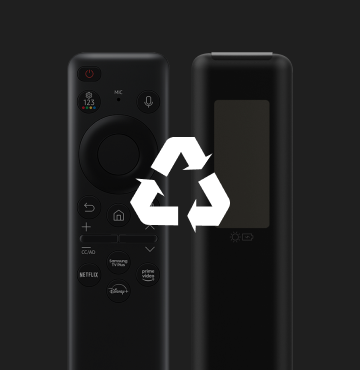The SolarCell
Remote Powered by
Light,
An Era Where
Disposable
Batteries are
No
Longer Needed
Samsung SolarCell Remote Story
How many
disposable batteries
are thrown away
in our households?
disposable batteries
are thrown away
in our households?
offer convenience by providing power without an external power source.
However, heavy metals in disposable batteries, such as zinc, manganese dioxide, graphite, ammonium chloride,
nickel and cadmium, pollute underground water and negatively impact soil if not separately collected.
toys, clocks and flashlights offer convenience
by providing power without an external
power source.
However, heavy metals in disposable
batteries, such as zinc, manganese dioxide,
graphite, ammonium chloride, nickel and
cadmium, pollute underground water and
negatively impact soil if not separately
collected.
Since less than 50% of disposable batteries are collected,
it is essential for us to find ways to avoid the use of disposable batteries.
it is essential for us to find ways to avoid the use of disposable batteries.
Since less than 50% of disposable
batteries are collected, it is essential
for us to find ways to avoid the use of
disposable batteries.
batteries are collected, it is essential
for us to find ways to avoid the use of
disposable batteries.
Scroll down
Scroll down
How many batteries are thrown away, based on Samsung Electronics'TV sales?
Would it be possible to use a remote control
without disposable batteries?


on until we go to bed as the source of energy?
First Release
of the SolarCell Remote




Born from research by Samsung Electronics' developers,
the SolarCell Remote was
first released together with the
QLED TV in 2021.
QLED TV in 2021.
Application of the solar cell, Improvement of energy efficiency, Application of recycled plastic
Point
- Application of the solar cell With a solar cell that generates energy even in a low-light indoor environment, the SolarCell Remote can be used without disposable batteries through sunlight and indoor lighting. The solar panel installed on the backside of the SolarCell Remote takes in light energy to generate electricity to operate the remote control. *To charge the remote with solar energy, set the TV remote down with the solar panel facing up. Place it in your living room while your lights are turned on, or you can place it near a window where it will soak in natural sunlight. If SolarCell Remote’s battery is drained, it would need to be charged with a USB-C cable. The battery level of SolarCell Remote can be checked through the pop-up guide on TV screen.
/
We are licensing out the SolarCell Remote technology
so that it can be applied to more diverse product lines
from other manufacturers.
We are licensing out the
SolarCell Remote technology
so that it can be applied to
more diverse product lines
from other manufacturers.
SolarCell Remote technology
so that it can be applied to
more diverse product lines
from other manufacturers.
SMM Awards and Energy
Winner of the Year Award
In 2022, the SolarCell Remote was provided with all of our new TV line-ups. When considering the expected sales of our TVs and their lifecycle, this measure will prevent the wastage of more than 200 million batteries which, if lined up, can stretch from Seoul to Las Vegas.
For its sustainability practices, the SolarCell Remote received the Sustained Excellence Award from the U.S. Environmental Protection Agency and the Energy Winner of the Year Award by Consumers Korea in 2021.
Samsung SolarCell Remote Story
Small energy savings
The energy used by remote controls might be minimal if one considers the overall lifecycle of electronic products from manufacturing to disposal. However, Samsung Electronics well understands that even such a seemingly small step can still make a considerable impact when considering the number of our global users.
We are committed to reducing energy consumption in the use stage and minimizing waste, such as disposable batteries,
by making improvements to even the smallest part of our operations.
Small energy savings
go a long way
The energy used by remote controls might be minimal if one considers the overall lifecycle of electronic products from manufacturing to disposal. However, Samsung Electronics well understands that even such a seemingly small step can still make a considerable impact when considering the number of our global users.We are committed to reducing energy consumption in the use stage and minimizing waste, such as disposable batteries,
by making improvements to even the smallest part of our operations.
[Samsung]SolarCell Remote Story
2022.09.27






